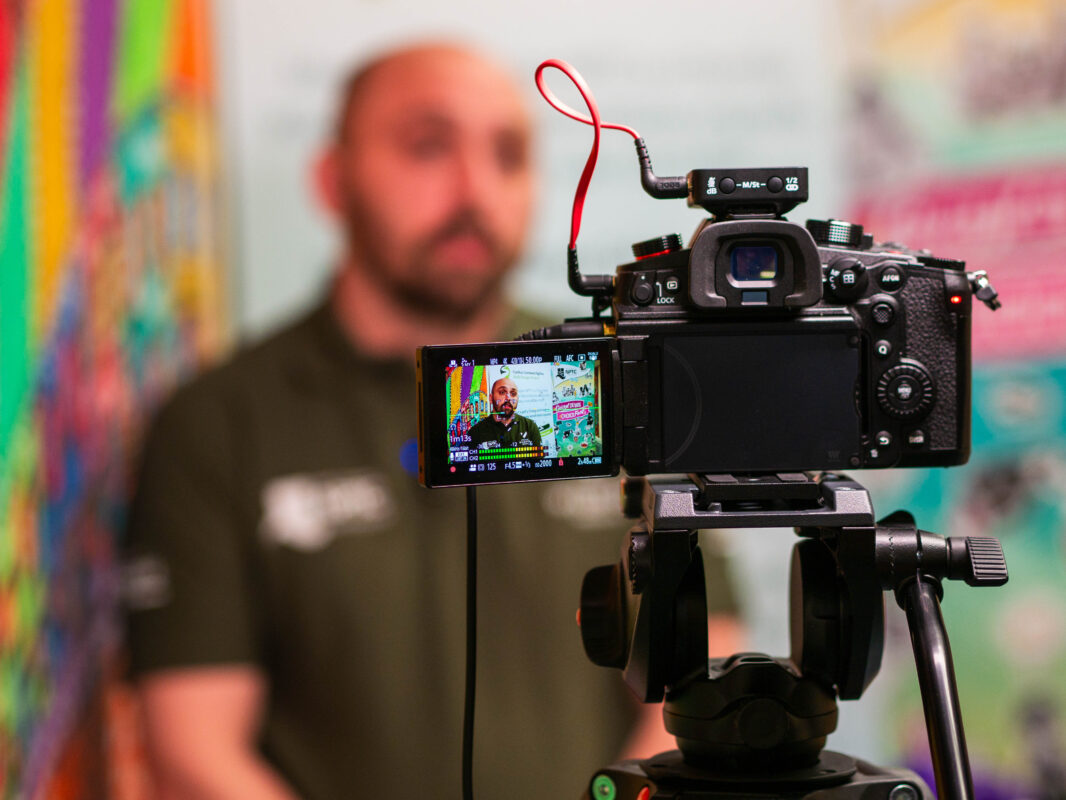Helping teachers encourage female learners into STEM

Ellie Bennett is a civil engineering lecturer at Stephenson College and part-time architectural designer.
Find out why she believes teachers need to promote female ambassadors in STEM before learners reach further education, and how improving self-efficacy in the classroom, and at home, is key to encouraging girls into STEM careers.
I remember the exact moment my eyes were opened to the world of engineering. I was at school and for my homework I was given the task of drawing my front door. I stood outside the house and looked at it for a few minutes, drew a rectangle, coloured it in yellow and showed it to my mum.
“Is that really what our door looks like? Let’s go and have another look,” she said. So, we went back outside and she showed me the different elements. I took in the lintel, the panels and the different shapes and edges, and then I compared it to other doors in the street. That’s when the penny dropped and I knew I wanted to learn more about design.
When I was 14 I started learning AutoCAD software and trying to gain as much experience as possible. By the time I got to college, I was able to help different people in my class. My teachers watched me doing this and that was when they encouraged me to go into teaching. At the time I felt I needed to get more experience in industry, so I got involved with training colleagues and went on to business to business training. As soon as I felt ready and the opportunity arose for me to teach in further education, I grasped it with both hands.
Gender inequality in STEM
My parents have been a huge influence on my career because they always encouraged me to explore how things work and why, but I know my experience is unusual compared to many girls growing up. I was the only girl studying engineering while I was at college, the only girl during my HND, and my degree. This is why it doesn’t surprise me that recent statistics have revealed that only 24 per cent of the STEM workforce are women, but it does make me very sad. However, I don’t think this is down to just one element – it is combination of things. I’ve talked to girls in classes, at careers fairs, and had conversations with women in industry, and I’ve found that girls just don’t seem to know about STEM industries in the first place.
Most who have heard about careers in STEM either have close family or friends who have introduced them to it or who already work in engineering, or they have stumbled across it by accident when looking at other courses. The second main reason appears to be down to girls having a lower level of self-efficacy. For some reason girls think they won’t be very good at these subjects, so they don’t try it. When they do try it, they may do it for one or two years, but then they hit a barrier and seem to give up.
Encouraging more women into STEM
I think there are two important things that need to happen to encourage more women into STEM. First, it needs to be a priority that we promote STEM subjects at school. Secondly, careers advisers need to update their skills so they can talk more about engineering. I’ve seen prospective female students being shown photographs of trades such as bricklayers on civil engineering programmes, and this couldn’t be more misrepresentative of the industry.
I went to a careers fair a couple of months ago and talked to a lot of young girls who were thinking about what they wanted to do. Most of them said they wanted to do health and beauty, but when I asked them why, it took them a long time to come up with a reason. In the end they said things like, “I like buying make-up”, or “I like doing my hair”. In response, I talked to them about the different transferable skills they could get in engineering and asked them whether they had thought about interior design, architecture, or anything that is art, as well as function. A couple of girls did eventually step forward, with one revealing she had thought about it because her dad was an engineer, but overall, they seemed very nervous to do so, and you could see this with their body language.
Introducing STEM subjects at a younger age
There is a lot of pressure in education to fulfil certain commitments, so as teachers we can end up treating the class as a whole, rather than trying to encourage individuals. Often by the time classes have got to FE, most of the students have made their minds up about what they want to do and there is very little we can do at this point. Instead, we need to look at doing more at school and think about how we can inspire them through social media.
People seem to think that most jobs in engineering are dirty – this is definitely a myth I would like to bust. Another one is around maths – there are lot of different types of maths and just because you don’t enjoy one type, doesn’t mean you are not going to enjoy another type. Saying that, engineering is not all about maths either! Another thing I always try to emphasise is that once you are qualified there are part time jobs available in engineering, as well as options to work from home, and compared to other jobs women may take up, the money is very good.
Boosting self-efficacy in the classroom
I think it is true that girls do require different teaching styles and STEM subjects naturally correspond with boys’ teaching styles, so girls may find it more challenging. However, research has shown that if girls come away with A-levels at an A or a B grade, they still feel they are not good enough, whereas a boy could come away with a C and they will be proud of himself. It all comes down to expectations of self-efficacy and this ability to overcome a negative mindset and to keep going and push yourself.
I try to lead by example with the girls in the class, but I also try not to focus attention on any one student at any one time. I use humour in the classroom, but I still feel the need to prove myself. I think that is a common thing for all women in engineering to feel we must be high achievers and be the best we can be. I see that in my classes too – the girls are always the highest achievers, get the highest grades, and work that extra bit harder. I am sitting on the fence when it comes to this being a good or a bad thing, because in one way I feel it is a shame we feel the need to prove ourselves, but on the other hand I also see it as a positive thing when I see my class pushing themselves and trying to be better.
Our culture is so deeply ingrained in us that whatever decisions we make are quite often subconscious, and behaviours we see in our formative years can have an impact on how we feel about ourselves. I don’t know how much is nature and how much is nurture when it comes to things like self-efficacy, but I do know that when we see people we look up to who are openly anxious about “not being good at maths” or “not being good at this or that”, it does rub off on us as we grow and mature, and as a result, we may have a tendency to avoid these areas completely.
As teachers, I feel it’s our responsibility to encourage our learners and to help them find their talent, invest their talent and not bury it in the ground. Sometimes we take things at face value and we don’t explore why a young person doesn’t want to go into this industry, but we need to consider how we will get them to broaden their horizons. I also think the more women we get into STEM subjects the more ambassadors and role models we will have to encourage others to follow in their footsteps.
As told to Julia Faulks – Online Editor at the Education and Training Foundation.











Responses